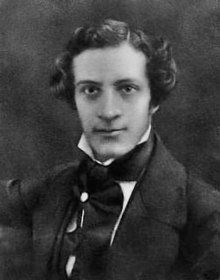 Henry Gray was a student at St George’s from 1845, and had a reputation for being a painstakingly methodical worker. He showed early promise and the Royal College of Surgeons awarded him the triennial prize for an essay entitled “The origin, connexions and distribution of nerves to the human eye and its appendages, illustrated by comparative dissections of the eye in other vertebrate animals”.
Henry Gray was a student at St George’s from 1845, and had a reputation for being a painstakingly methodical worker. He showed early promise and the Royal College of Surgeons awarded him the triennial prize for an essay entitled “The origin, connexions and distribution of nerves to the human eye and its appendages, illustrated by comparative dissections of the eye in other vertebrate animals”.
When he was just 25 he was elected a fellow of the Royal Society. One year later he was awarded the Astley Cooper prize for his dissertation “On the structure and use of spleen”, along with three hundred guineas. His career progressed with a focus on teaching and studying anatomy, advancing from Demonstrator of Anatomy to curator of the museum and, eventually, Lecturer of Anatomy at St George’s Hospital.
The first edition of Gray’s Anatomy, Descriptive and Surgical was published in 1858. It covered 750 pages with 363 figures and is perhaps the most successful medical textbook of all time. Fellow St George’s alumnus Henry Vandyke Carter illustrated the textbook, himself an accomplished draughtsman and demonstrator of anatomy at St George’s. The book was updated in 1860, when the second edition was published. The textbook is now titled Gray’s Anatomy and is considered the authoritative anatomy textbook for medical students.
Gray died of smallpox in 1861 aged 34, contracted whilst he was caring for his ten-year old nephew, who recovered. At the time of his death, he was preparing for his final interview for the prestigious position of assistant surgeon at St George’s. He was laid to rest at Highgate Cemetery.